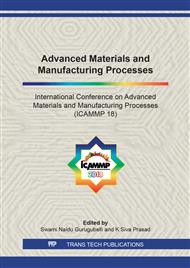p.103
p.109
p.115
p.122
p.128
p.136
p.142
p.152
p.159
Evaluation of Coefficient of Thermal Expansion of Zirconium by Using Dilatometer & Ansys
Abstract:
Zirconium alloys are solid solutions of zirconium or other metals. Zirconium has very low absorption cross-section of thermal neutrons. Zirconium has high corrosion resistance, ductility and hardness. Zirconium is mainly used as a good refractory metal. Zirconium can be manufactured by using standard fabrication techniques. In the present scenario zirconium alloys are used in water reactors for the cladding of fuel rods in nuclear reactors in nuclear technology. We use the composition of zirconium alloys as more than 94.5 weight percentage of zirconium and less than 2.45 weight percentage of copper which are added to improve mechanical, thermal properties and corrosion resistance. This paper first focuses on the study of thermal properties of Zirconium. And this particularly concentrated on variation of Coefficient of Thermal Expansion by varying temperatures by using Dilatometer and as well as ANSYS
Info:
Periodical:
Pages:
128-135
Citation:
Online since:
June 2018
Keywords:
Price:
Сopyright:
© 2018 Trans Tech Publications Ltd. All Rights Reserved
Share:
Citation:


